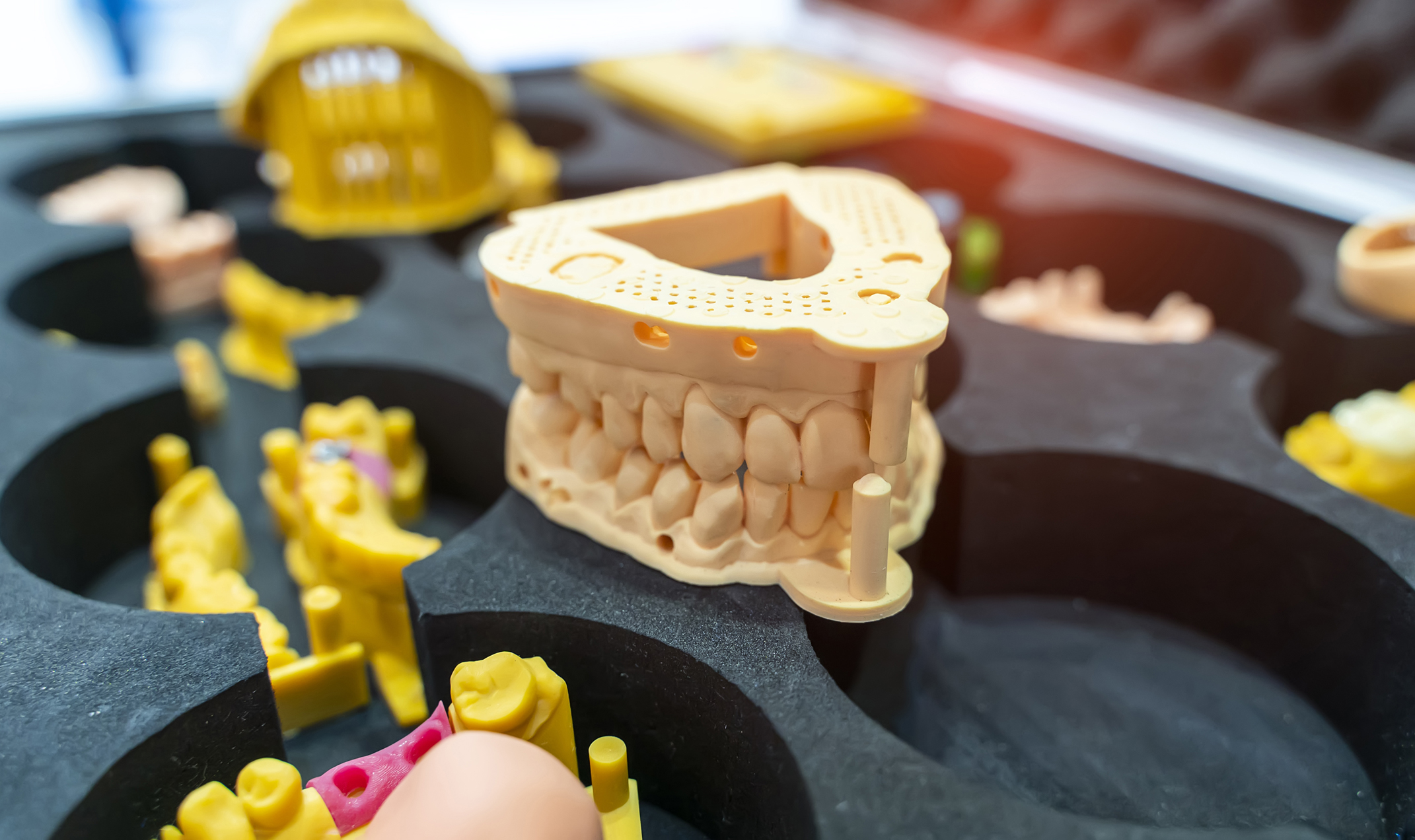3D printing has long since ceased to be a nerdy gimmick. Dentistry benefits more than any other branch of medicine from developments in this field. 3D printing completely digitizes the fabrication of splints, crowns, impression trays, and more. Saving time and money and achieving more precise and reliable results are just a few of the benefits that high-quality 3D printers offer. The possibilities of 3D printing in dentistry are already amazing.
What is 3D printing?
Over the past years, 3D printing has continuously evolved – also in the field of dentistry. In general, 3D printing is an additive manufacturing process in which material is deposited layer by layer to create three-dimensional objects. The process is controlled by a computer and the objects are designed using computer-aided design (CAD) software. No tools of any kind are used. Printing materials can be liquid or solid.
Nowadays, 3D printing has gained a foothold in many industrial sectors, research, art, and other areas. Even houses can be built with it. In the medical sector, 3D printing is used primarily in dentistry. Splints, crowns, models for clear aligner treatment, drilling templates, and impression trays are just a few examples that can already be 3D printed.
The advantages of 3D printing in dentistry
Although the initial cost of 3D printers can be off-putting, they pay off in the long run. 3D printers are available at prices ranging from €1,000 to €60,000. They differ mainly in their accuracy, platform size, printing speed, and printing technology. So, it certainly makes sense to identify potential areas and the extent to which 3D printing could be used.
3D printing offers enormous advantages over conventional manufacturing processes. For example, to create a dental prosthesis the impression had to be cast by hand with a plaster compound. This copy was then milled out by the dental technician or a milling machine. Up to 80% of the material was left over and could no longer be used. If you use a 3D printer instead, the entire process is digitized. First, an intraoral scanner takes a digital impression, which is transferred to the dental laboratory. There it is converted into a 3D teeth model on the screen in about 30 minutes. This model can then be 3D printed.
Thus, workflows are optimized and there is hardly any surplus material. In addition, costs are significantly lower in the long term. Finer structures can ensure even higher quality. Apart from that, surgeons can also use 3D models to plan and practice the whole surgery. Last but not least, digitization also eliminates transportation and corresponding potential damage to dental objects.
All advantages at a glance:
- higher quality due to finer and more accurate structures
- lower costs
- improved workflows through digitization
- less time required
- no external sources of error
- flexible planning due to digital versions
The most common 3D printing technologies in dentistry
Depending on the application, different printers are used in dentistry. In the early days of 3D printing, Multi Jet Modeling (MJM) was particularly successful. Liquid synthetic resin is jetted through very fine nozzles onto the build platform and immediately cured with UV light. In MJM, several materials can be used simultaneously and many different objects can be printed in one go. Due to the enormous size of the printer as well as the high cost of acquiring and maintaining a printer, MJM has been increasingly superseded by other 3D printing technologies.
Probably the most common 3D printing technologies in dentistry are stereolithography (SLA) and digital light processing (DLP). Both use similar technologies but differ mainly in the type of light source. In SLA, liquid resin is cured by a laser point by point in a very precise manner. Advantages include low acquisition costs, high resolution, and flexibility in terms of material. Changing the material is simply a matter of changing the resin container. SLA produces smoother surfaces than DLP.
In DLP, a digital video projector cures the materials using many different micromirrors. Compared to SLA, smaller sizes can be realized, but the process is more expensive. Both DLP and SLA printed parts require post-processing. In general, however, 3D printers do have a positive impact. They help optimize processes and results and dentistry is thus advancing step by step.
